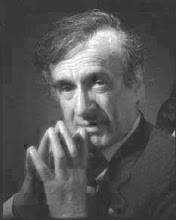From: PilotsFor911Truth.org
Much controversy has surrounded the speeds reported for the World Trade Center attack aircraft. However, none of the arguments for either side of the debate have been properly based on actual data, until now. Pilots For 9/11 Truth have recently analyzed data provided by the National Transportation Safety Board in terms of a "Radar Data Impact Speed Study" in which the NTSB concludes 510 knots and 430 knots for United 175 (South Tower) and American 11 (North Tower), respectively. A benchmark has been set by the October 1999 crash of Egypt Air 990, a 767 which exceeded it's maximum operating limits causing in-flight structural failure, of which data is available to compare to the WTC Attack Aircraft.
Egypt Air 990 (EA990) is a 767 which was reported to have entered a dive and accelerated to a peak speed of .99 Mach at 22,000 feet. Boeing sets maximum operating speeds for the 767 as 360 Knots and .86 Mach. The reason for two airspeed limitations is due to air density at lower vs. higher altitudes. To understand equivalent dynamic pressures on an airframe of low vs. high altitude, there is an airspeed appropriately titled "Equivalent Airspeed" or EAS[1]. EAS is defined as the airspeed at sea level which produces the same dynamic pressure acting on the airframe as the true airspeed at high altitudes.[2]
Pilots For 9/11 Truth have calculated the Equivalent Airspeed for EA990 peak speed of .99 Mach at 22,000 feet as the equivalent dynamic effects of 425 knots at or near sea level. This airspeed is 65 knots over max operating for a 767, 85 knots less than the alleged United 175, and 5 knots less than the alleged American 11. Although it may be probable for the alleged American 11 to achieve such speed as 430 knots is only 5 knots over that of EA990 peak speed, It is impossible for the alleged United 175 to achieve the speeds reported by the NTSB using EA990 as a benchmark.
Pilots For 9/11 Truth have further studied if a 767 could continue controlled flight at such reported speeds. According to the NTSB, EA990 wreckage was found in two distinct debris fields, indicating in-flight structural failure which has been determined to have occurred a few seconds after recording peak speed. Based on EA990, it is impossible for the alleged United 175 to have continued controlled flight at more than 85 knots over the speed which failed the structure of EA990.
Full detailed analysis, including analysis of a recent simulator experiment performed, and interviews with United and American Airlines 757/767 Pilots can be viewed in the new presentation, "9/11: World Trade Center Attack" available only at http://pilotsfor911truth.org. Although other factors come into play within the transonic ranges, Dynamic pressure is dynamic pressure. Math doesn't lie. Boeing needs to release wind tunnel data for the Boeing 767. Despite the fact that the data can be fabricated, such a release of data may alert more pilots and engineers to the extremely excessive speeds reported near sea level for the Boeing 767 in which they can decide for themselves.
Founded in August 2006, Pilots For 9/11 Truth is a growing organization of aviation professionals from around the globe. The organization has also analyzed Flight Data provided by the National Transportation Safety Board (NTSB) for the Pentagon Attack and the events in Shanksville, PA. The data does not support the government story. The NTSB/FBI refuse to comment. Pilots For 9/11 Truth do not offer theory or point blame at this point in time. However, there is a growing mountain of conflicting information and data in which government agencies and officials refuse to acknowledge. Pilots For 9/11 Truth Core member list continues to grow.
Comments? Discuss here.
[1] http://www.luizmonteiro.com/Altimetry.aspx#EquivalentAirspeed, http://www.csgnetwork.com/machonecalc.html (Equivalent Airspeed and Mach One Calculator to convert Mach into True Airspeed based on altitude/temp and then into Equivalent Airspeed)
[2] http://www.aerospaceweb.org/question/instruments/q0251.shtml
Subscribe to:
Post Comments (Atom)



No comments:
Post a Comment